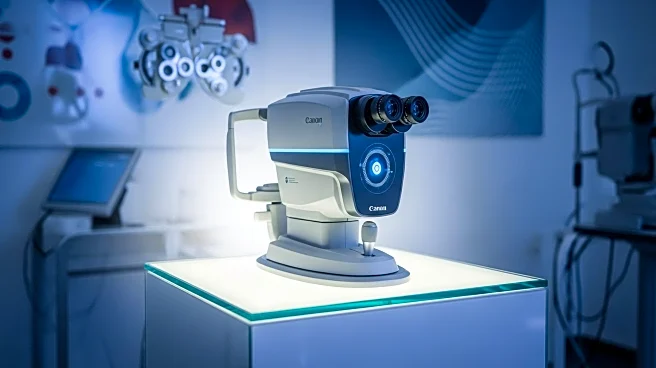What's Happening?
Glaukos Corporation, a leader in ophthalmic pharmaceuticals and medical technology, will highlight its latest innovations at the American Academy of Ophthalmology (AAO) annual meeting in Orlando, Florida.
The company will present advancements in glaucoma treatment, corneal health, and retinal disease therapies. Key presentations include the Travoprost Intracameral Implant (iDose TR) for reducing intraocular pressure and corneal cross-linking techniques for keratoconus. Glaukos has pioneered Micro-Invasive Glaucoma Surgery (MIGS) and continues to develop novel, dropless platform technologies aimed at improving patient outcomes.
Why It's Important?
Glaukos' participation in the AAO meeting underscores its role as a major innovator in ophthalmic care. The company's technologies, particularly the iDose TR implant, offer significant improvements in the management of glaucoma, potentially reducing the need for daily medication and enhancing patient compliance. The advancements in corneal cross-linking could provide new treatment options for keratoconus, a condition that can lead to severe vision impairment. These innovations have the potential to transform ophthalmic treatment paradigms, offering more effective and less invasive solutions for patients.
What's Next?
Following the AAO meeting, Glaukos may pursue further clinical trials and regulatory approvals to expand the use of its technologies. The company is likely to continue its focus on developing and commercializing new therapies that address unmet needs in ophthalmic care. Stakeholders such as healthcare providers, patients, and industry partners will be watching for updates on the efficacy and availability of these treatments.
Beyond the Headlines
The introduction of advanced ophthalmic technologies raises questions about accessibility and affordability for patients. Ensuring equitable access to these innovations is crucial, as is addressing potential ethical concerns related to new medical devices. The long-term impact on healthcare systems and patient care models will depend on how these technologies are integrated into standard practice.












